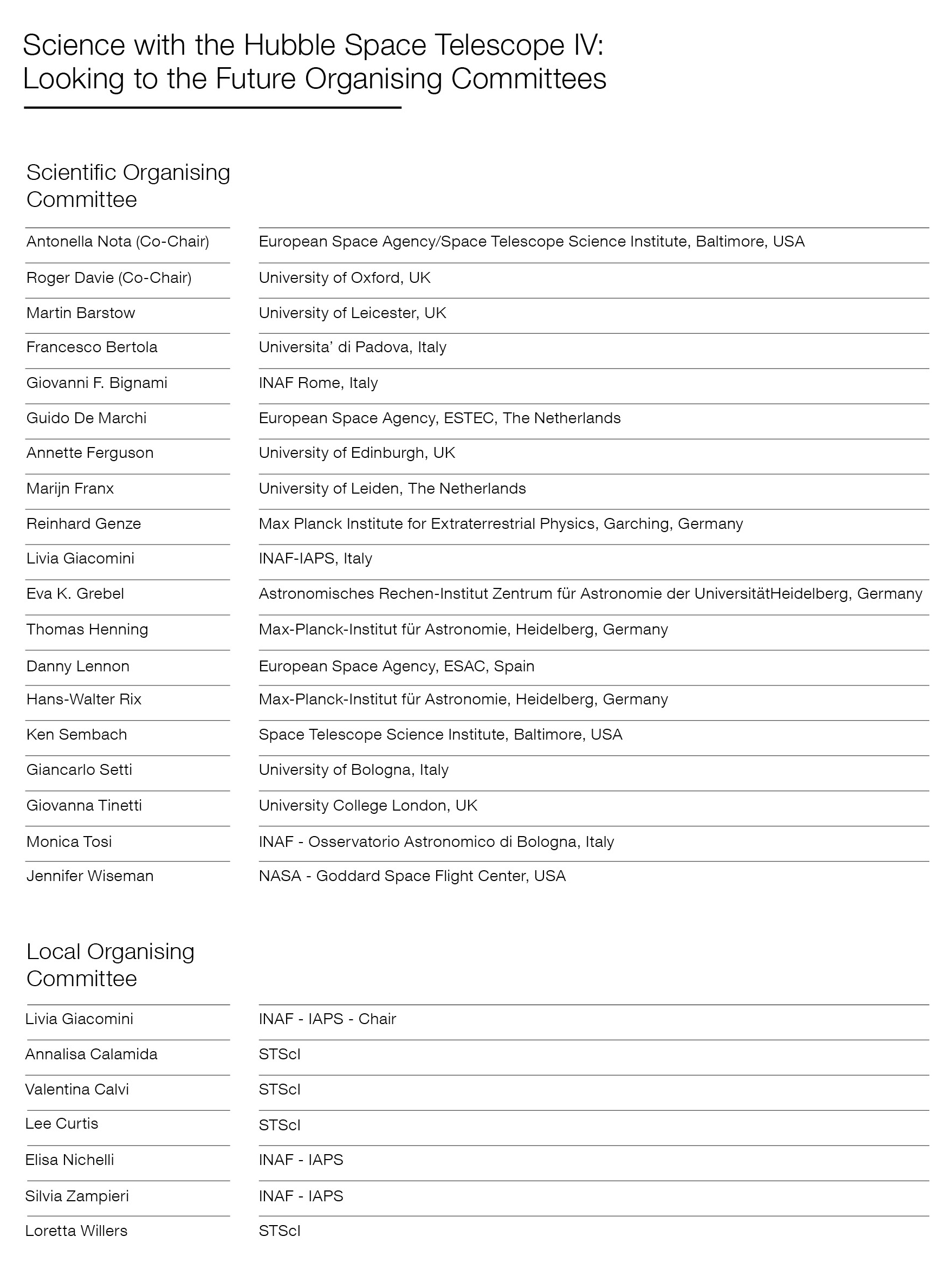sci14005 — Announcement
Science with the Hubble Space Telescope IV
16 May 2014
We have just wrapped up and recovered from the fourth Science with the Hubble Space Telescope (HST4) conference, held in Rome from 17-–20 March and organised by ESA in collaboration with NASA and STScI. What an amazing four days! With the beautiful backdrop of the Accademia dei Lincei, it was an immersion in Hubble science, spanning a wide variety of topics including ultraviolet aurorae in the Solar System, detailed studies of extrasolar atmospheres and pushing out the horizon of the observable universe.
More than 150 astronomers from all over the world met to present and discuss their latest results, in lively sessions which often extended into the sunny gardens of Villa Farnesina. For a detailed compendium of the science presented, see the latest article in the STScI Newsletter by N. Reid et al. We are also working to create the archival website for the conference and all presentations and photos will be posted on the conference website by the 1 July .
The HST4 conference co-Chairs are extremely grateful to a very engaged Science Organising Committee (see below) for crafting an excellent scientific programme, which effectively showcased Hubble’s achievements as a versatile and powerful observatory that is still at the peak of its scientific capabilities.
All speakers were encouraged to think of the future of their field and it was clear that Hubble still has a great deal left to offer. The community of optical/ultraviolet astronomers and Hubble users are also already calculating how the James Webb Space Telescope (JWST) will further advance their field and thinking about what other facilities they would like to see planned for the following decade, after JWST finishes its mission.
It was a not a coincidence that the HST4 conference was held at the end of March. It fell just before the 24th anniversary of Hubble’s launch. A stunning image of NGC 2174 was unveiled in Rome to celebrate — albeit a little prematurely — this anniversary. The image was unveiled by John Grunsfeld, NASA Administrator for the Science Mission Directorate, and Fabio Favata, Head of ESA’s Science Planning and Community Coordination Office, who highlighted the success of the three-decade-long partnership between the two space agencies and how this success has formed the foundation for the collaboration on the James Webb Space Telescope and more space astronomy missions in the future. “Collaboration is more difficult than competition,” remarked Favata, “but when the collaboration is successful, the whole exceeds the sum of the parts.” So true…
This message of collaboration was reiterated during the talk Beyond HST: the Future of UVOIR Space Astronomy in 2030, as astronomers wondered whether we will be able to answer in our lifetime the key questions: “Where do we come from? and are we alone in the Universe?”. As the audience watched the previously unseen interview with the late John Bahcall, an eloquent and committed advocate for the Hubble Space Telescope, we all realised that it was these very same questions that had shaped Hubble’s design and raison d’être. When Hubble was launched, one of its key goals was to image substellar companions to bright nearby stars even though extrasolar planets had not even been detected at that time. Now, we discuss Hubble’s role in searching for methane and water in exoplanet atmospheres.
We look forward to organising HST5 in a few years to showcase what other remarkable discoveries Hubble will bring in the future.
Contacts
Antonella Nota
ESA HST Project Scientist, STScI
Email: hubblenewseurope@stsci.edu
Roger Davies
Philip Wetton Professor of Astrophysics, University of Oxford, UK
Email: rld@astro.ox.ac.uk
About the Announcement
| Id: | sci14005 |




